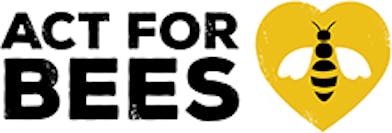Articles on Bees
Displaying 201 - 220 of 241 articles
Bee population variations are linked to climate change, new research has shown. The study highlights warnings about the effect…

Perhaps I was naive, but when I discovered the extent of the chemical soup applied to typical fields I was astonished. As part of our ongoing investigations into the impact of pesticides on bees, we looked…
Male honey bees are more susceptible to a fungal intestinal parasite (Nosema ceranae) than females, researchers from the…
Exposure to a widely used pesticide stunts growth in worker bumblebees, researchers from the University of London have found…

Much like people, insect colonies like to know if her majesty is at home. In the ants, bees, wasps and termites (the “big four” of the social insect world), the queen has long been suspected of using special…
A new facet of the honeybee “waggle dance” - in which bees dance to inform their counterparts where to find a food source…
From the Himalayas to the subtropics - it appears flower colour has evolved to attract bee pollinators. Biologists from Monash…
Research in the Himalayas has investigated how flowers evolved distinctive bee-friendly colours to attract pollinators. This…

The controversial ban on neonicotinoid insecticides comes into effect across the EU this weekend. Neonicotinoids, or neonics, are powerful neurotoxins, killing insects with minute doses and impairing their…

Everyone knows what it’s like to be uncertain – at least, humans do. But are non-human animals ever uncertain? When we feel uncertainty, instead of risking the consequences of a bad or wrong decision…
Queen bees have been found to display honesty signals about their reproductive status and quality. The new research by the…

Landing is arguably the most nerve-racking element of any flight. To execute a safe landing, a pilot needs to know the plane’s speed and its distance from the landing surface. The pilot’s challenge is…
Bees went though a mass extinction, along with the dinosaurs and species of flowering plants, 65 million years ago. It’s…

The EU banned the use of neonicotinoid pesticides for two years in April, after a sustained campaign by beekeepers, green groups and environmental organisations across Europe. These groups are convinced…
By analysing the flight of bees, the University of Queensland’s Brain Institute has learned how bees gain maximum fuel efficiency…

In a honey bee colony, the queen bee rules while her daughter workers do nothing but work. So what happens when the queen dies? Are there worker riots, with the colony dissolving into a chaotic mess? Surprisingly…

Without good advice, governments are in extreme danger of creating erroneous or damaging public policy. So it’s a serious matter when a government science adviser is accused of ignoring scientific evidence…

News that the European Union (EU) has restricted the use of neonicotinoid insecticides was welcomed by scientists, farmers, beekeepers and politicians around the world. But the limitations of the restriction…

The European Union has just banned three pesticides thought to affect the learning behaviour of bees. The two-year ban, which takes effect in December, is in response to a dramatic drop in bee numbers…
Honey bees are thought to be the primary pollinators, but wild insects may be better. Two new studies, one published in Science…






